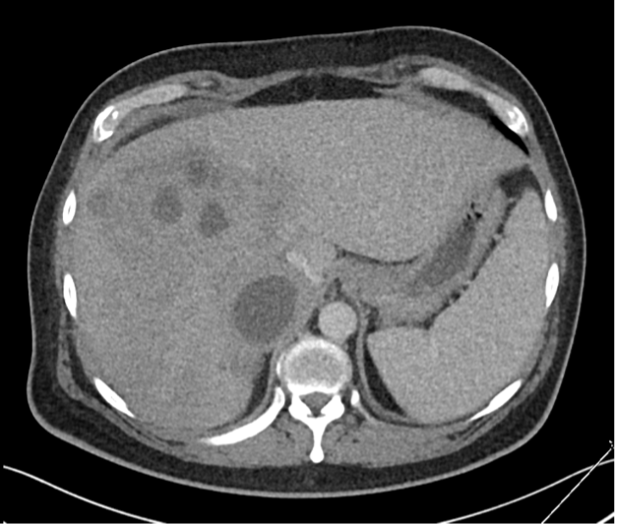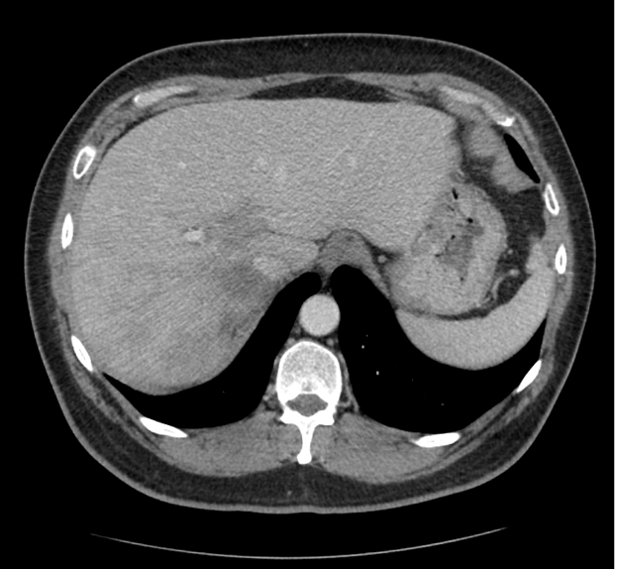Case Presentation: A 46-year-old Guatemalan male with a past medical history of hypertension, type 2 diabetes mellitus, iron deficiency anemia, and chronic ethanol use presented with intermittent fevers, bright red blood per rectum, loose bowel movements, and significant unintentional weight loss. Physical examination revealed right upper quadrant tenderness and conjunctival pallor but was otherwise unremarkable. Laboratory testing indicated leukocytosis and anemia. Initial imaging suggested metastatic colon cancer with sigmoid thickening and multiple hepatic masses. However, subsequent liver biopsies later resulted with granulomatous inflammation and Streptococcus constellatus on culture. Despite intravenous antibiotic treatment, the patient’s symptoms persisted. A serological workup, prompted by evidence of granulomatous inflammation on biopsy, revealed Strongyloides IgG positivity. Empiric treatment with ivermectin resulted in complete symptom resolution. Given these findings, a diagnosis of chronic Strongyloides colitis was made which ultimately led to secondary seeding and pyogenic liver abscess formation.
Discussion: This case posed a diagnostic dilemma. The patient initially had a broad differential including late-stage colon cancer and inflammatory bowel disease (IBD) due to the chronicity and presentation of symptoms. However, the discovery of granulomatous inflammation on biopsy and the patient’s travel history prompted serological testing for Strongyloides stercoralis. The case is complicated by the rarity of strongyloidiasis in developed countries, which often leads to misdiagnosis or delayed diagnosis. For example, recent literature demonstrates that chronic strongyloidiasis can mimic other gastrointestinal diseases including IBD. Additionally, Streptococcus constellatus is also an unusual pathogen that has been recently citied to cause pyogenic liver abscesses. To date, there are no other documented cases of strongyloidiasis resulting in Streptococcus constellatus liver abscess formation.
Conclusions: This case illustrates the critical need for a comprehensive clinical approach when patients present with nonspecific gastrointestinal complaints and multiple pyogenic lesions. The diagnosis of strongyloidiasis is challenging due to its diverse presentation and the potential for mimicking other gastrointestinal conditions including colonic neoplasm and IBD, as noted here. As a result, there are lethal consequences to misdiagnosis of strongyloidiasis and prompt treatment can drastically impact patient outcomes. Thus, this case underscores the importance of considering strongyloidiasis in the differential diagnosis in patients with atypical infections, especially those involving gram-negative bacteria.


